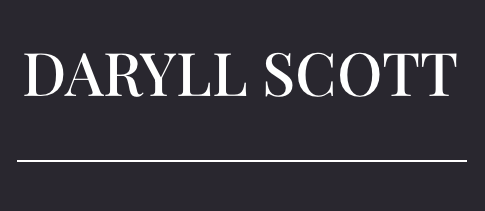Leaders Develop Themselves

Why is so much organisational development focussed on leadership?
Organisational performance is most affected by culture, and culture is most influenced by leadership behaviour. According to HBR
, an inspired employee is two and a quarter times more effective than one who is merely satisfied. Can you think of any other variable in business that will make a 225% difference? Therefore, developing leaders to create a compelling culture and inspire the people is likely to give you the most bang for your buck.
Simple so far. Now we come to the trickier questions; what is leadership, and what abilities need to be developed?
Most leadership theories focus on either the traits of the leader (like autocratic, democratic, bureaucratic or charismatic) or focus on ways in which the leader exerts their power and influence (like situational, transactional or transformational). The well-rounded leader needs the awareness and flexibility to shift between these different styles, and when they do, the lines between these categories begin to blur.
For example, leaders are required to:
- Make themselves visible but also not hog the limelight
- Be clear and decisive but also be open-minded and curious
- Prevent failure but also take risks
- Set clear outcomes but also be open to change
- Plan actions in advance but also be agile and responsive
- Get clarity and be data-led but also act decisively when things are ambiguous
- Make things simple but also remain aware of the complexity and nuances
- Understand individual circumstances but also act for the good of the collective
- Drive high performance but also prevent churn or burnout
Leadership is not a job title, it's a way of being.
It's not the world that's in crisis, it's our leadership
Curate your own leadership development - here's a roadmap
To understand your personality, these free resources are really good: 16 Personalities and VIA Character Strengths Survey.
I'm qualified in the Marshall Goldsmith style of coaching, which is great for getting past the defensiveness and getting on with the business of growing. Check out these two of his bestsellers: What Got You Here Won't Get You There and TRIGGERS
Due to the difficulty, responsibility and visibility of their roles, it is difficult for leaders to avoid manifesting behaviours that are often described as syndromes.
- Imposter Syndrome describes the condition where people find it hard to believe they deserve any credit for what they may have achieved and remain internally convinced that they are frauds. In leadership behaviour, this manifests as a lack of trust in other people's abilities, ranging from becoming suffocating control freaks to 'washing their hands' and offering no guidance whatsoever.
- Founder syndrome is particularly prevalent in entrepreneurial leaders. Consequences of this mindset can include autocratic decision-making, constant firefighting and crisis management, obsessive behaviour like micro-management and bringing in external experts but remaining impervious to their recommendations.
- Hubris syndrome describes the way in which leaders become overconfident, lose touch with reality, focus on personal image, develop contempt for advice or criticism of others and behave impulsively.
- Overcome cognitive biases that form inflexible expectations
- Overcome unhelpful knee-jerk reactions that paralyse thinking
- Attribute a balanced meaning to whatever happens
- Maintain a clear focus on the future
Leaders need to consider multiple factors, like financial growth, operational excellence and customer experience, all from multiple perspectives. Data alone does not provide adequate insight to lead the future.
Leaders must think deductively (top-down, seeing patterns or trends in data) and inductively (bottom-up, making concrete observations and extrapolating them). For a little more on this, see my blog: 'Are you a bottom-up or top-down thinker?'. They must also be logical, and empathetic, and a little creativity helps too. All of these abilities can be developed. Look into resources to develop your IQ, EQ and CQ.
It is widely recognised that the most productive, decisive and harmonious state that an individual can be in is a state of flow. When we are in flow, we are in the zone and perform at exceptional levels. When we are not in flow, we overthink and become clouded by emotion.
In a project codenamed 'Aristotle' researchers at Google compared 180 different teams that varied in performance and looked at a wide range of factors from seniority to emotional intelligence. The conclusion was that performance was a product of how the team worked together, with the most important factors ranked as follows: Number one on the list was psychological safety. This is the extent to which team members feel safe enough to take risks and be vulnerable in front of each other. Two and three on the list were Dependability and Clarity, respectively. These relate to clear roles, clear objectives, and the autonomy to get things done. Four and five were meaning and impact, respectively. Meaning is achieved by the work being personally important to the team members, and for impact, they need to believe that their work matters.
4. Vision & Rhetoric
Conclusion
To invest in your ability as a leader, I recommend that you invest in the following journey:
1. Self-awareness - Learn about personality and get a coach, mentor or brutally honest friend.
2. Flexibility - Learn how to navigate your own mind and get into flow states.
3. Interpersonal awareness - Learn how to read the room.
4. Vision & Rhetoric - Learn how to tell a compelling story.










